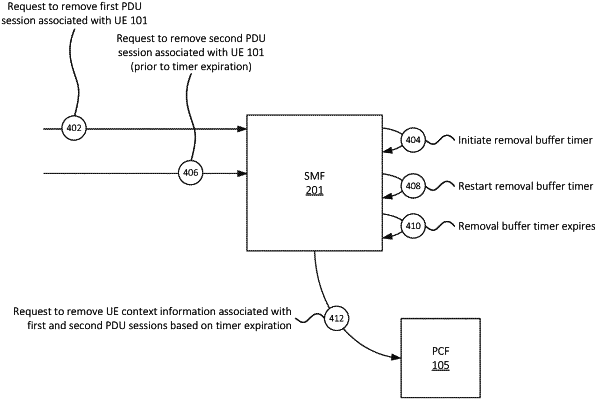| CPC H04L 41/0894 (2022.05) [H04L 12/1407 (2013.01); H04L 67/14 (2013.01)] | 20 Claims |

|
1. A device, comprising:
a session management element comprising one or more processors configured to:
receive a first message that includes a request to remove a first communication session between a User Equipment (“UE”) and a network;
initiate a timer based on receiving the first message, wherein the timer is associated with a particular expiration;
receive, prior to expiration of the timer, a second message that includes a request to remove a second communication session between the UE and the network;
determine, after receiving the first and second messages, that the timer has expired;
output, to a policy element of the network and based on determining that the timer has expired, a request to remove UE context information associated with the UE and the first and second communication sessions, wherein the request includes:
a first communication session identifier of the first communication session, and
a second communication session identifier of the second communication session;
receive a third message that includes a request to establish or modify a third communication session between the UE and the network;
output, to the policy element of the network and without initiating the timer, a request for policies associated with the UE and the third communication session;
receive, from the policy element and in response to the request for policies, particular policy information associated with the UE and the third communication session; and
establish or modify the requested third communication session based on the received particular policy information.
|